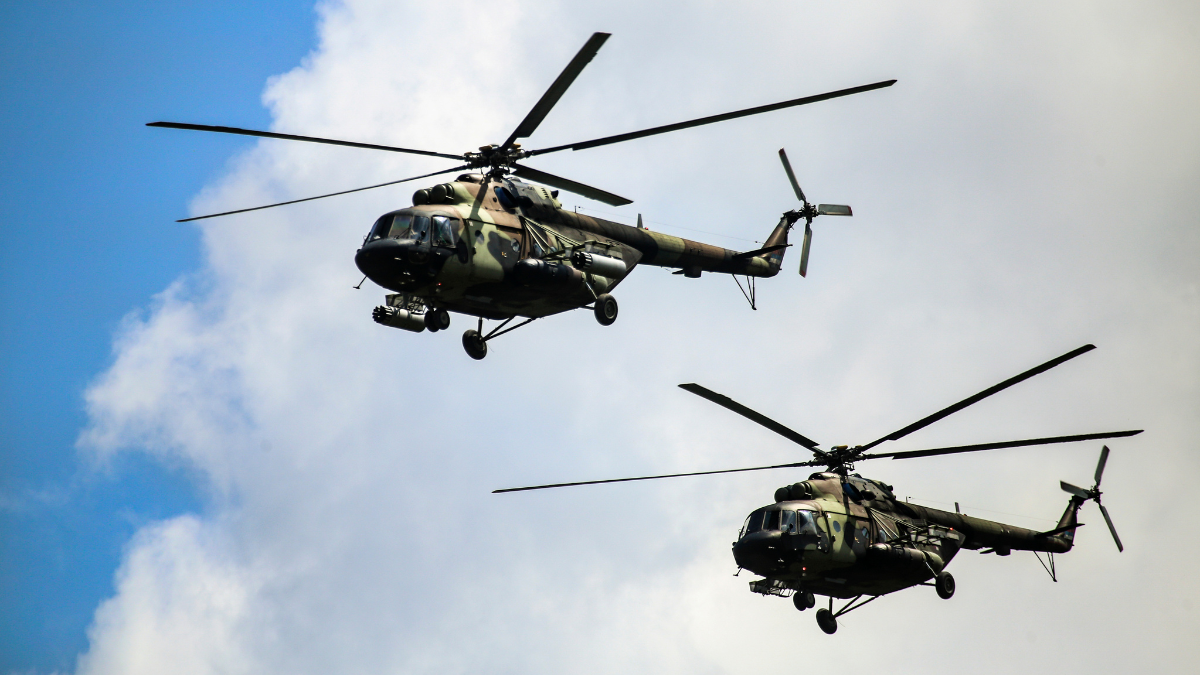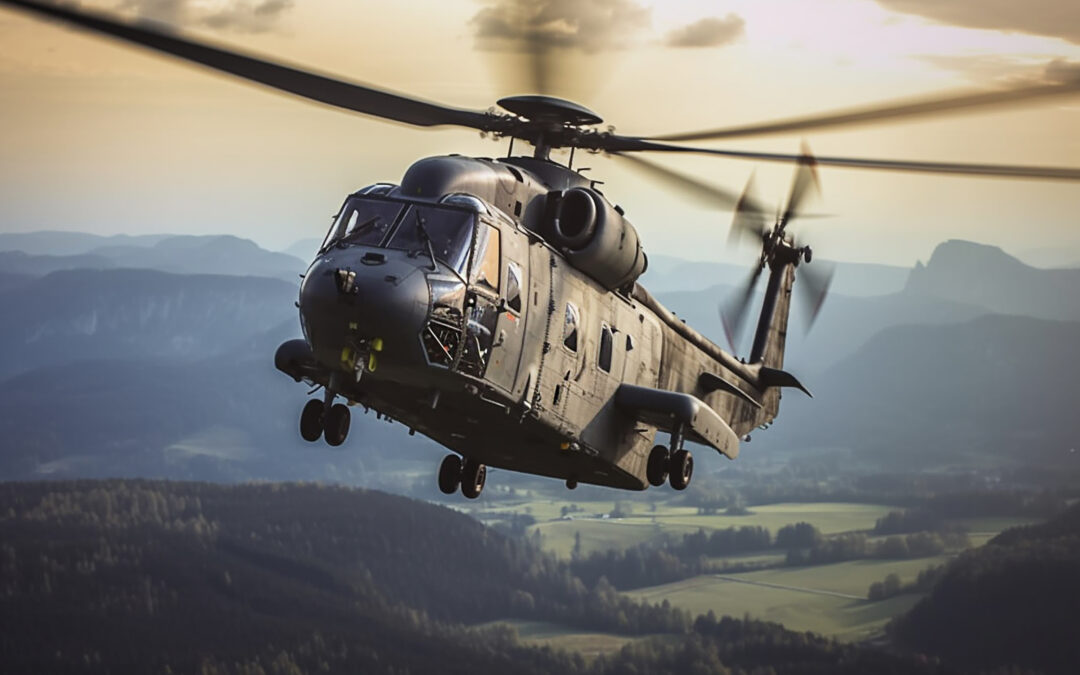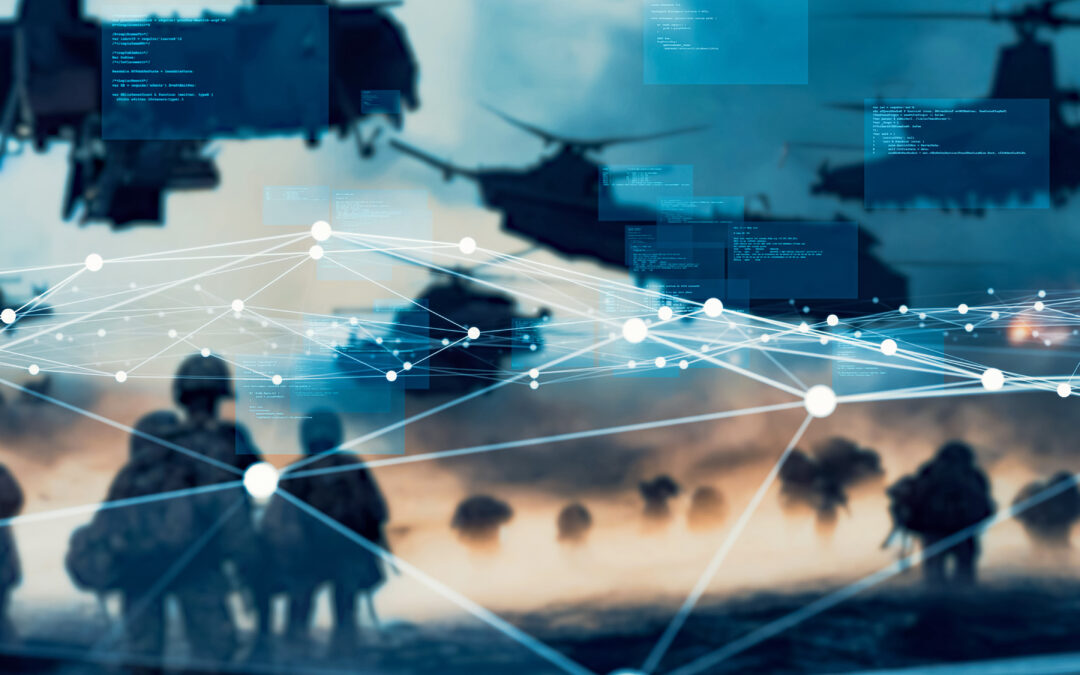Helicopter Adoption in Defense
Helicopters have played a crucial role in defense operations since their early adoption in the 1940s. The first mass-produced helicopter in World War II was primarily used for reconnaissance and medical evacuation (MEDEVAC) missions; however, the significance of these aircrafts grew during the Korean War (1950-1953), where helicopters proved vital in quickly transporting wounded soldiers from the battlefield to medical facilities, as well as in troop transport and logistical support. It wasn’t until the Vietnam War (1955-1975) that military helicopters were utilized for air assault amongst the traditional use cases of MEDEVAC and close air support (CAS).
Today, five primary OEMs—Airbus, Bell Textron, Boeing, Leonardo, and Sikorsky Aircraft—dominate the global market for helicopter manufacturing. As of recent estimates, approximately 20,790 military helicopters are in service across 153 countries, with an additional 3,402 on order, underscoring their critical role in modern defense operations.
Modern Military Helicopter Capabilities
Transportation & Logistics
Military helicopters play a particularly crucial role in the transportation and logistics of critical missions. They are essential for rapid troop deployment, allowing forces to be quickly moved to and from combat zones. Additionally, helicopters are used extensively for the transport of supplies and equipment, ensuring that military units remain well-equipped and operational in various terrains and conditions. One of the most critical uses of military helicopters is in MEDEVAC missions. These helicopters, such as the Sikorsky HH-60M Black Hawk, are equipped to quickly and safely transport wounded soldiers from the battlefield to medical facilities, significantly improving survival rates and medical outcomes.
Reconnaissance and Surveillance
Helicopters are also vital for reconnaissance and surveillance missions, offering a versatile platform for aerial intelligence gathering. These helicopters conduct real-time surveillance, which is crucial for battlefield awareness and strategic planning. They also perform border and coastal patrols, enhancing security and monitoring activities in sensitive areas. Furthermore, the integration of unmanned aerial vehicles (UAVs) with military helicopters has significantly advanced their surveillance capabilities, providing extended reach and more comprehensive data collection. This combination allows for enhanced situational awareness and more efficient operations in diverse environments.
Combat and Attack Missions
Helicopters are crucial for combat and attack missions, providing CAS for ground troops, executing anti-tank and anti-armor operations, and carrying out strategic strike capabilities. In CAS roles, helicopters like the AH-64 Apache and AH-1 Cobra deliver precise firepower to support ground forces, offering enhanced maneuverability and the ability to hover and engage targets from low altitudes. For anti-tank operations, helicopters equipped with advanced missile systems are designed to destroy armored vehicles and fortifications. Additionally, strategic strike capabilities enable helicopters to perform deep penetration missions to target high-value enemy assets, leveraging their speed, agility, and advanced targeting systems to conduct effective strikes in various combat scenarios.
Perhaps one of the most significant newer helicopter programs is the Future Long-Range Assault Aircraft (FLRAA), a U.S. Army initiative, aiming to develop advanced vertical lift aircraft to replace the UH-60 Black Hawk. Bell Textron is manufacturing the new aircraft, V-280 Valor. FLRAA focuses on enhancing speed, range, payload capacity, and operational efficiency while incorporating cutting-edge technology for improved survivability and interoperability. This program is critical to the Army’s modernization strategy, enabling faster troop movements, extended operational reach, and reduced maintenance costs.
Search and Rescue
Helicopters play a vital role in search and rescue (SAR) operations, particularly in hostile environments and during disaster response and humanitarian aid missions. These helicopters are equipped to perform complex rescue operations in challenging and dangerous conditions, such as conflict zones, where they can quickly extract injured personnel and provide critical medical evacuation. Additionally, military helicopters are crucial in responding to natural disasters, delivering essential supplies, transporting medical teams, and rescuing those trapped or stranded. The ability to rapidly deploy and provide logistical support makes military helicopters indispensable in both military and humanitarian operations
How Performance Defense Can Help
Performance excels in supporting major aerospace and defense aircraft programs across a wide range of software and hardware areas, including extensive experience with helicopter programs.
Avionics
Performance is renowned for its avionics expertise, covering everything from tail to nose, including flight controls, navigation, flight management systems, engine controls, electrical power distribution, displays, and communication systems.
Weapons Systems
We provide full-lifecycle mission-critical software support for advanced weaponry, defense systems, stealth technology, and radar evasion, ensuring the highest level of operational efficiency and security.
Hardware Design, Development, and Testing
Our expertise encompasses mission-critical hardware design, development, and rigorous testing. Utilizing our in-house hardware test labs, we employ rapid, custom test fixtures to ensure reliability and performance under diverse conditions.
These capabilities make Performance an invaluable partner in advancing military helicopter technology. To learn more and connect with one of our experts, click here.





